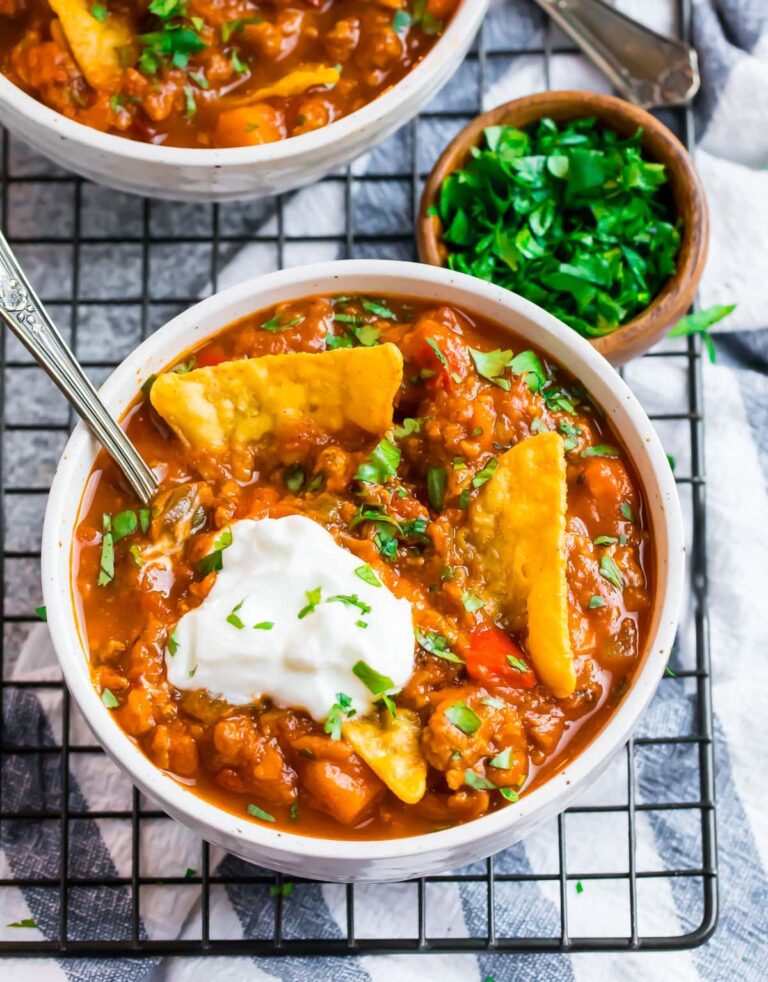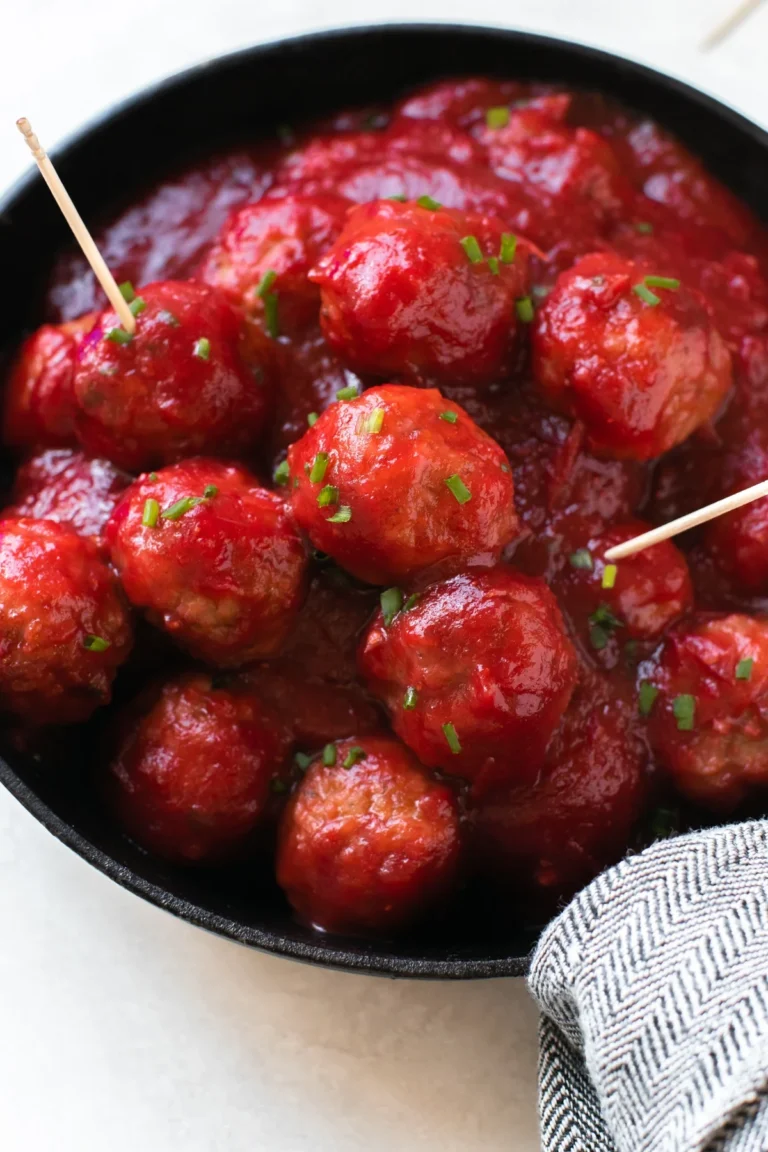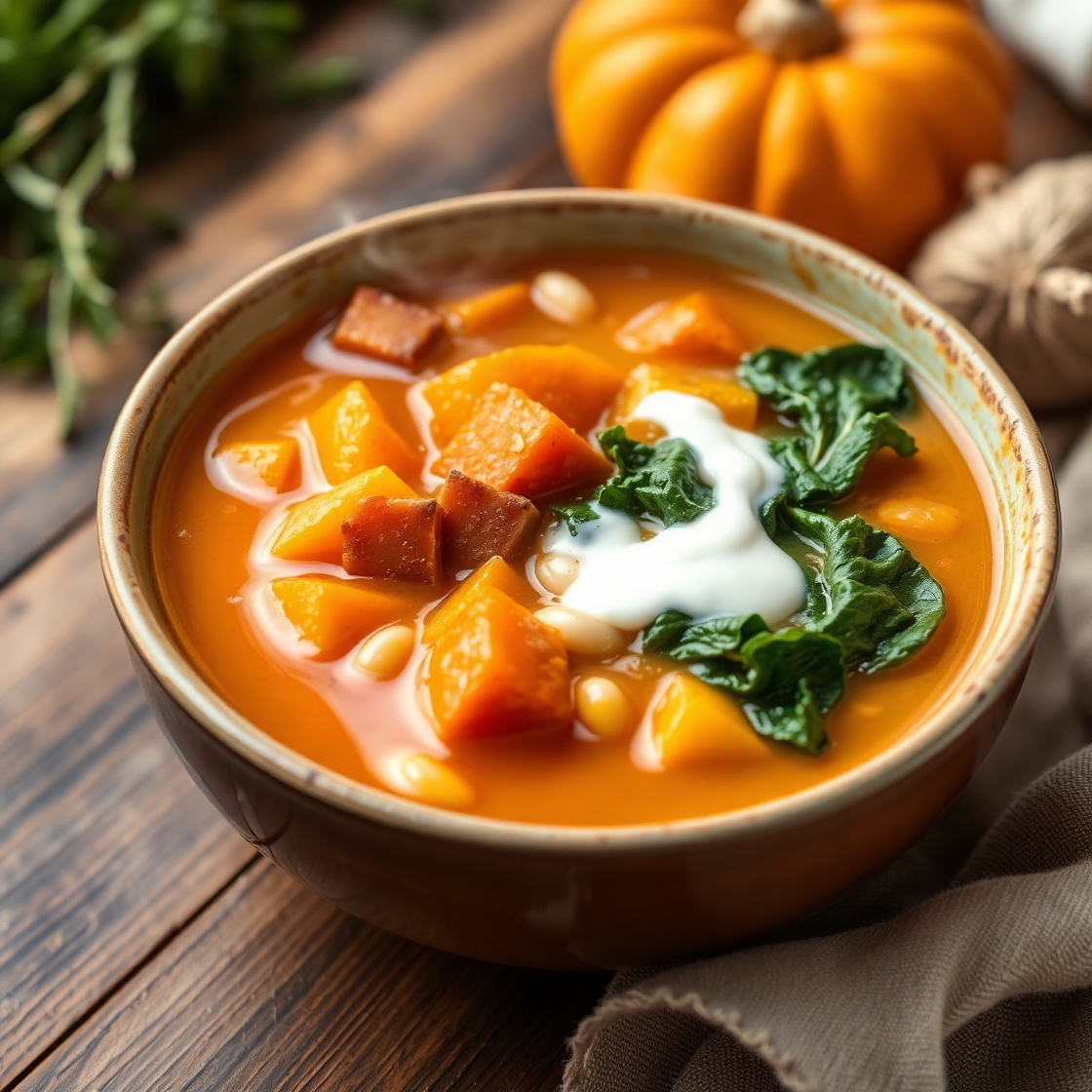
There’s something deeply comforting about a simmering pot on the stove as leaves fall and the air turns crisp.
This Fall Soups and Stews recipe guide was born out of a desire to capture the essence of autumn in every spoonful—earthy, warm, and brimming with seasonal flavors.
Whether it’s a quiet dinner at home or a gathering with friends, these dishes bring coziness and heartiness to the table like nothing else. If you’ve ever craved a bowl of something both nourishing and nostalgic during chilly weather, you’re in the right place.
These recipes are made to be flexible, affordable, and full of flavor—whether you’re feeding a family, meal-prepping for the week, or just indulging in the season’s best ingredients.
Stick around and I’ll show you how to make fall soups and stews that not only warm your hands, but warm your heart too.
Why I Love This Recipe
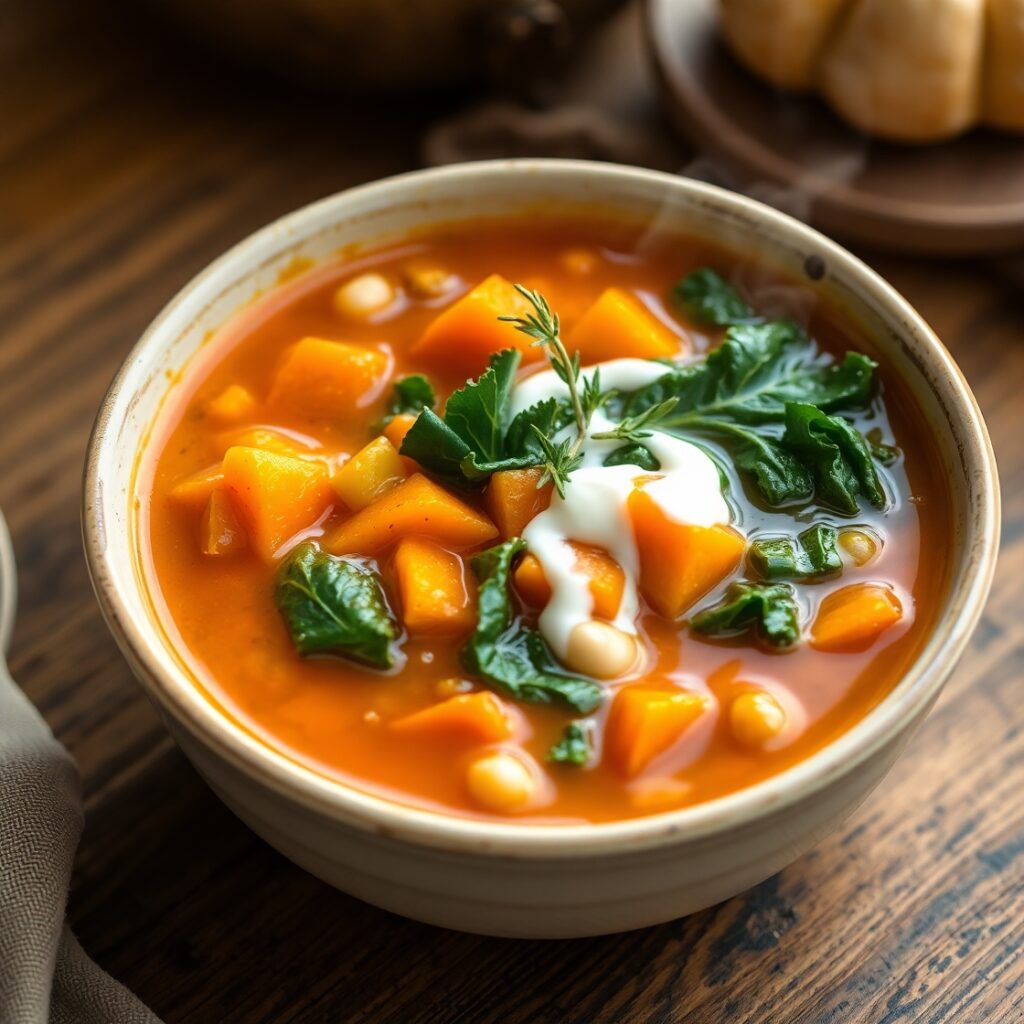
Fall soups and stews are not just about cooking—they’re about storytelling in a bowl.
They bring together everything wonderful about the season: crisp apples, hearty root vegetables, fresh herbs, tender meats, and spices like cinnamon, clove, or nutmeg that whisper of harvest dinners and family gatherings.
The real beauty of this recipe guide is its adaptability. You can swap out proteins, change the vegetables depending on what’s in your pantry, and make it either rustic and chunky or silky and smooth. These aren’t just soups and stews; they are warm meals with soul.
They make use of affordable seasonal ingredients and allow for batch cooking, so you’ll always have something satisfying on hand.
Whether you’re making butternut squash bisque, smoky beef stew, or creamy wild rice soup, these dishes are designed to showcase autumn at its finest. And yes—they freeze beautifully, making your future self very grateful.
Ingredients for Fall Soups and Stews
The ingredients you’ll need can vary depending on which direction you go—creamy, brothy, meaty, or vegetarian—but here’s a foundational breakdown of the most essential components for making standout fall soups and stews:
Vegetables:
Fall vegetables add body and earthy sweetness. Think butternut squash, sweet potatoes, carrots, celery, parsnips, leeks, onions, kale, and spinach.
Proteins:
For heartier stews, proteins like beef chuck, chicken thighs, ground turkey, or sausage offer depth and richness. For lighter soups, white beans, lentils, or even tofu work beautifully.
Herbs & Aromatics:
Garlic, onion, bay leaves, thyme, rosemary, sage, and parsley bring layers of flavor. For a hint of spice, consider cinnamon sticks, smoked paprika, or a touch of cayenne.
Broth/Base:
High-quality chicken, beef, or vegetable broth is essential. Homemade is best, but a good store-bought option will work.
Starch/Thickeners:
To bulk up your stews, use potatoes, wild rice, barley, or even pasta. For creamy textures, rely on heavy cream, coconut milk, or pureed beans or squash.
Add-ins & Finishing Touches:
Apple cider vinegar or lemon juice brightens the flavor. A splash of cream or a swirl of pesto adds richness. Fresh herbs, grated Parmesan, or crunchy croutons elevate the final bowl.
All ingredients are easy to find, affordable, and flexible enough to substitute based on your dietary needs or pantry situation.
How Much Time Will You Need?
Making a fall soup or stew doesn’t require you to stand at the stove for hours—unless you want to.
- Prep Time: 15–30 minutes depending on chopping and mise en place
- Cook Time: 45 minutes to 2 hours
- Total Time: Roughly 1 to 2.5 hours
Many soups and stews improve in flavor over time, so they’re ideal for making ahead or letting simmer gently as you relax or multitask around the house.
How to Make This Fall Soups and Stews
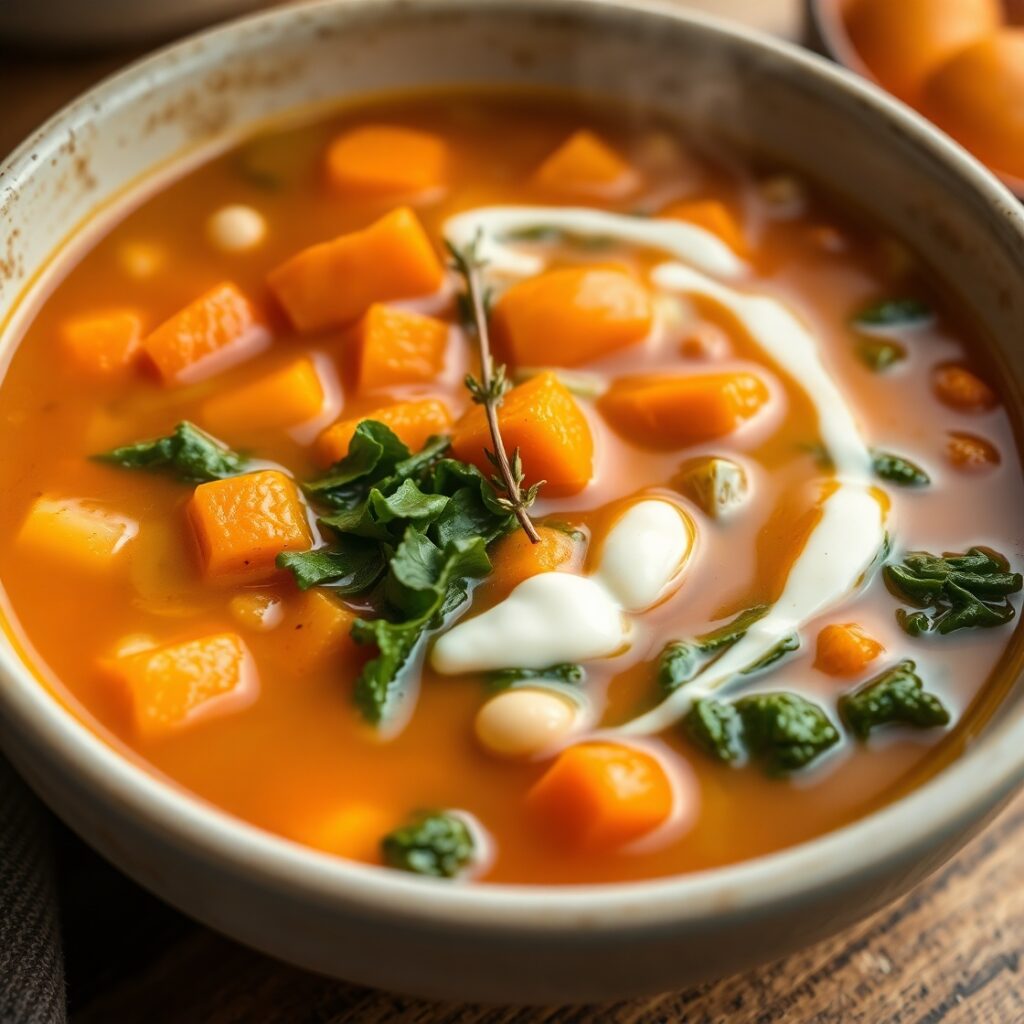
Here’s a foundational guide you can use to create endless variations of fall soups and stews:
Step 1: Build the Flavor Base
Start by heating olive oil or butter in a large Dutch oven or soup pot over medium heat. Add your aromatics—onions, garlic, leeks, and celery—and sauté until softened and fragrant.
This first step is key to unlocking layers of flavor.
Step 2: Add Herbs and Spices
Add dried or fresh herbs like thyme, rosemary, bay leaves, and any warm spices like cinnamon or nutmeg. Toast them lightly in the fat for 30–60 seconds to activate their oils.
This infuses the base of your soup with warm, autumnal notes.
Step 3: Brown the Protein
If you’re using meat, now’s the time to brown it. Sear beef chunks or chicken thighs until golden on the outside. This adds deep umami flavor and better texture.
Remove and set aside if you plan to simmer it separately.
Step 4: Add Vegetables
Next, toss in your chopped root vegetables—carrots, parsnips, sweet potatoes, and squash. Let them get a bit of color for depth.
For softer vegetables like kale or spinach, save those for the final 10–15 minutes of cooking.
Step 5: Deglaze and Add Liquid
Deglaze the pot with a splash of apple cider vinegar or dry white wine, scraping up the flavorful bits stuck to the bottom. Add broth, protein (if removed earlier), and bring to a boil.
Reduce heat to low and let it gently simmer.
Step 6: Simmer and Adjust
Cover and simmer for 45 minutes to 1.5 hours, depending on your ingredients. Stir occasionally. Taste and adjust seasoning with salt, pepper, or acid.
If your stew is too thick, add more broth. If your soup is too thin, uncover and simmer to reduce.
Step 7: Finish and Serve
Right before serving, stir in cream, a squeeze of lemon, or fresh herbs for brightness. Serve hot with crusty bread or cornbread.
Substitutions
One of the best things about fall soups and stews is how flexible they are.
Vegetables:
No butternut squash? Use pumpkin, sweet potato, or carrots. No kale? Spinach, chard, or even frozen greens work fine.
Protein:
Beef can be swapped for ground turkey or lentils. Chicken thighs can be replaced with rotisserie chicken or chickpeas for a vegetarian version.
Creaminess:
Coconut milk can replace cream for dairy-free options. Use pureed white beans or blended cauliflower for thickening instead of flour or cream.
Gluten-Free:
Skip pasta and opt for wild rice, quinoa, or potatoes.
Vegan:
Skip animal-based protein and use beans or lentils, veggie broth, and coconut milk.
Each of these swaps maintains the recipe’s comfort and richness, while accommodating dietary needs.
Best Side Dishes for Fall Soups and Stews
These warm and cozy sides turn a humble bowl of soup or stew into a full meal:
1. Crusty Rosemary Garlic Bread
Toasted and rubbed with olive oil and garlic, perfect for dipping.
2. Apple Walnut Salad with Maple Vinaigrette
Adds crunch, freshness, and balance to the hearty main dish.
3. Cheddar Herb Biscuits
Fluffy, cheesy, and herby—ideal for soaking up stew gravy.
Serving and Presentation Tips
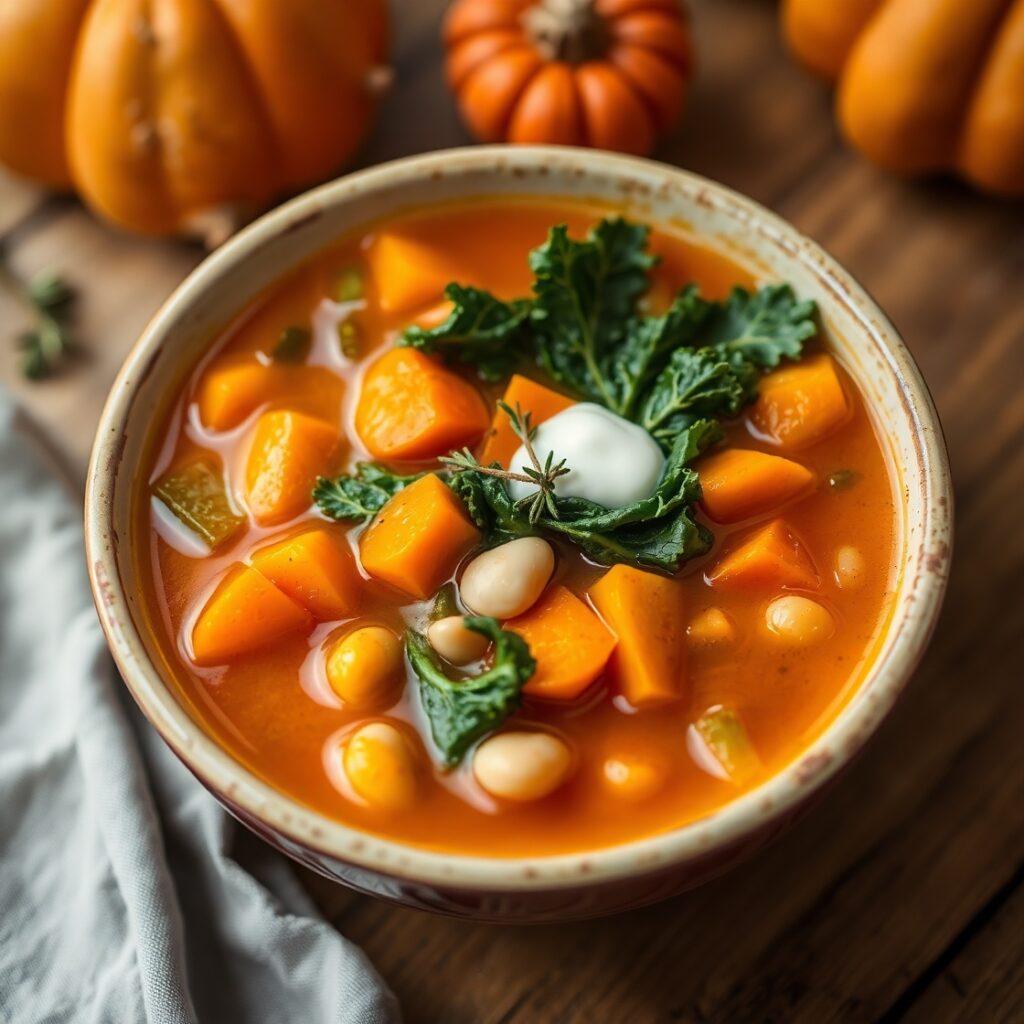
Fall soups and stews are inherently rustic and homey, but thoughtful presentation can elevate them from everyday to extraordinary.
Use warm-toned bowls: Earthy ceramics or stoneware bowls in autumnal tones—burnt orange, deep green, or cream—enhance the visual appeal.
Garnish with intention: A swirl of cream, a sprinkle of fresh herbs (like parsley or thyme), or a few toasted seeds can add color and texture. Cracked black pepper, grated Parmesan, or a drizzle of olive oil also make beautiful finishing touches.
Serve with texture contrast: Accompany with crusty bread, cornbread, or crackers for contrast. A spoonful of pesto or a slice of grilled cheese on the side makes the bowl even more inviting.
Keep your servings warm by preheating the bowls with hot water and draining just before plating—this small step keeps your dish hot longer.
Tips and Tricks to Make This Recipe Better
The secret to unforgettable fall soups and stews lies in the layers—layers of flavor, texture, and time.
Tips for Better Flavor and Texture:
- Brown your ingredients well: Searing your proteins and lightly caramelizing your veggies at the beginning makes a world of difference. That golden-brown color adds depth that plain boiling never achieves.
- Don’t rush the simmer: Low and slow cooking allows flavors to meld and intensify. Let your stew gently bubble until everything is tender and well incorporated.
- Use acid strategically: A splash of vinegar or lemon juice at the end of cooking brightens up deep flavors and keeps the dish from tasting flat.
- Finish with fat: A knob of butter or a drizzle of cream at the end adds silkiness and rounds out the mouthfeel.
- Make ahead: Most soups and stews taste better the next day after the flavors have time to develop. Store overnight and reheat gently for peak deliciousness.
Common Mistakes to Avoid
Avoiding a few key mistakes will help you make the best version of these seasonal dishes:
- Skipping the sauté: Starting with raw ingredients in boiling liquid will leave your soup tasting flat. Always sauté aromatics and brown proteins.
- Adding everything at once: Layer your ingredients by cook time—hearty vegetables early, tender greens and pasta later.
- Over-salting early: Broth can reduce and become saltier. Season gradually and taste at the end.
- Not cutting ingredients uniformly: Uneven sizes will cook at different rates, leading to mushy or undercooked bits.
- Boiling too hard: This can break down ingredients too fast and cloud your broth. Keep it at a gentle simmer.
How to Store It
Fall soups and stews are excellent for meal prep and leftovers.
Refrigeration:
Let the soup cool completely before storing. Transfer to an airtight container and keep in the fridge for up to 4 days.
Freezing:
Most soups and stews (except dairy-heavy ones) freeze beautifully. Store in freezer-safe containers or zip-top bags with as little air as possible. Label with name and date. They’ll keep well for 2 to 3 months.
Reheating:
Always reheat gently over low to medium heat. If it thickens too much in the fridge or freezer, add a splash of broth or water to loosen.
FAQ
Q1: Can I make this soup vegetarian or vegan?
Absolutely. Swap the meat for lentils, beans, or tofu. Use vegetable broth and coconut milk for creaminess.
Q2: How do I make my stew thicker?
Simmer uncovered to reduce liquid. Or mash some of the vegetables or add a slurry of cornstarch and water.
Q3: What’s the best pot to use for soup or stew?
A heavy-bottomed Dutch oven is ideal. It distributes heat evenly and retains warmth for long simmering.
Q4: Can I cook this in a slow cooker or Instant Pot?
Yes. For slow cookers, sauté aromatics first, then cook on low 6–8 hours. For Instant Pot, use sauté mode first, then pressure cook on high for 30–45 minutes.
Q5: What if I don’t have broth?
Use water and add bouillon cubes or paste, or simmer with herbs, onion, and garlic for 30 minutes to make a quick broth substitute.
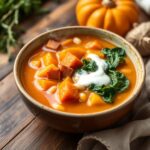
Fall Soups and Stews Recipe Guide
- Total Time: 1 hour 40 minutes
- Yield: Serves 6-8
- Diet: Vegetarian
Description
A hearty, comforting recipe for Fall Soups and Stews, this dish captures the warmth and coziness of autumn in every spoonful. Packed with seasonal vegetables, herbs, and either protein or plant-based alternatives, this versatile guide allows you to customize your perfect bowl. Ideal for chilly nights, make-ahead meals, and freezer-friendly planning, it’s an easy, nourishing way to enjoy the best flavors of fall. Use this as your base for endless variations—from rustic beef stew to velvety squash soup or a creamy chicken and wild rice combo.
Ingredients
- 2 tablespoons olive oil or butter
- 1 large onion, chopped
- 2 garlic cloves, minced
- 2 carrots, peeled and sliced
- 2 celery stalks, chopped
- 2 cups diced butternut squash or sweet potatoes
- 1 teaspoon dried thyme
- 1 bay leaf
- 4 cups vegetable or chicken broth
- 1 (15 oz) can white beans or chickpeas (optional)
- 1 cup kale or spinach, chopped
- Salt and pepper, to taste
- ½ cup heavy cream or 1 cup coconut milk (optional)
- Lemon juice or vinegar, to finish
Instructions
- Heat oil in a Dutch oven over medium heat. Sauté onions until translucent. Add garlic and cook 30 seconds more.
- Add carrots, celery, and squash. Sauté for 5–7 minutes until lightly browned.
- Stir in thyme and bay leaf. Pour in broth and bring to a boil.
- Reduce to a simmer, cover, and cook for 30–45 minutes until vegetables are soft.
- Add beans and greens. Cook for another 10 minutes.
- Stir in cream or coconut milk (if using), and season with salt, pepper, and a splash of lemon juice.
- Remove bay leaf. Serve hot, garnished with herbs or cheese.
Notes
Add pre-cooked protein like shredded chicken, turkey, or sausage in the last 10 minutes.
Blend half the soup with an immersion blender for a thicker texture.
Let sit for 10 minutes before serving to allow flavors to deepen.
- Prep Time: 25 minutes
- Cook Time: 1 hour 15 munites
- Category: Soup/Stew
- Method: Stovetop
- Cuisine: American
Nutrition
- Serving Size: 1.5 cups
- Calories: 210

